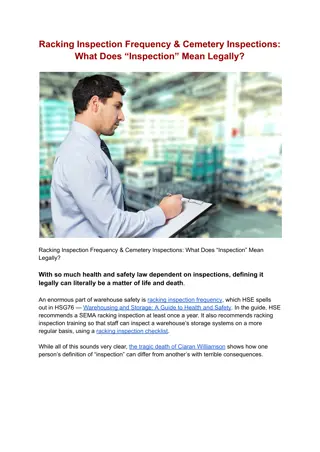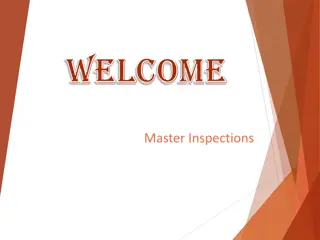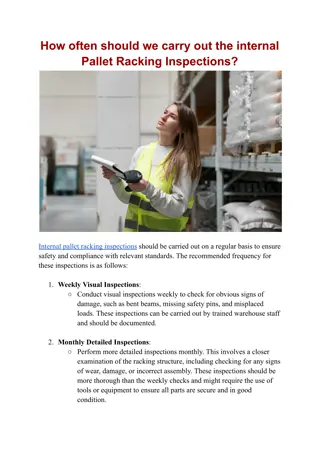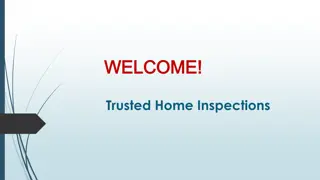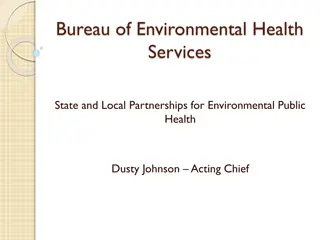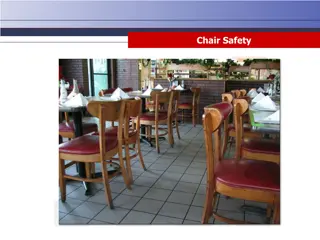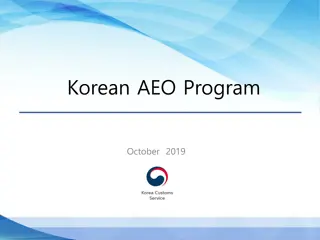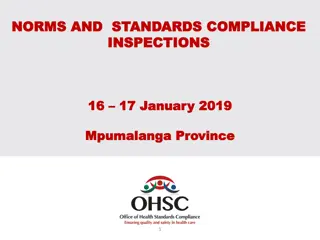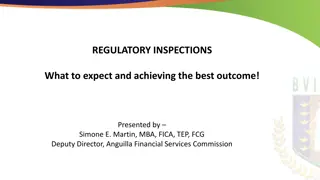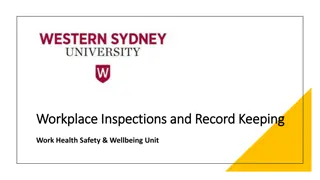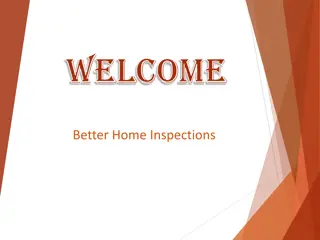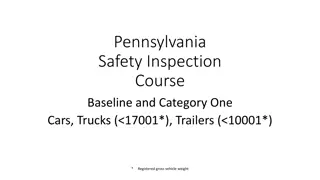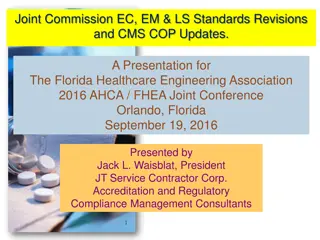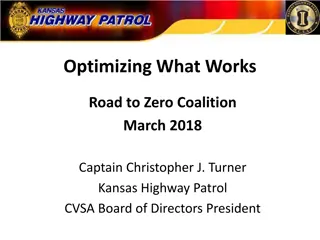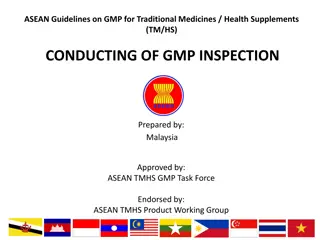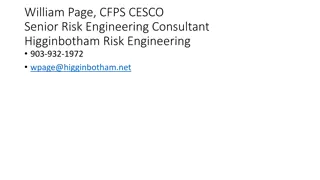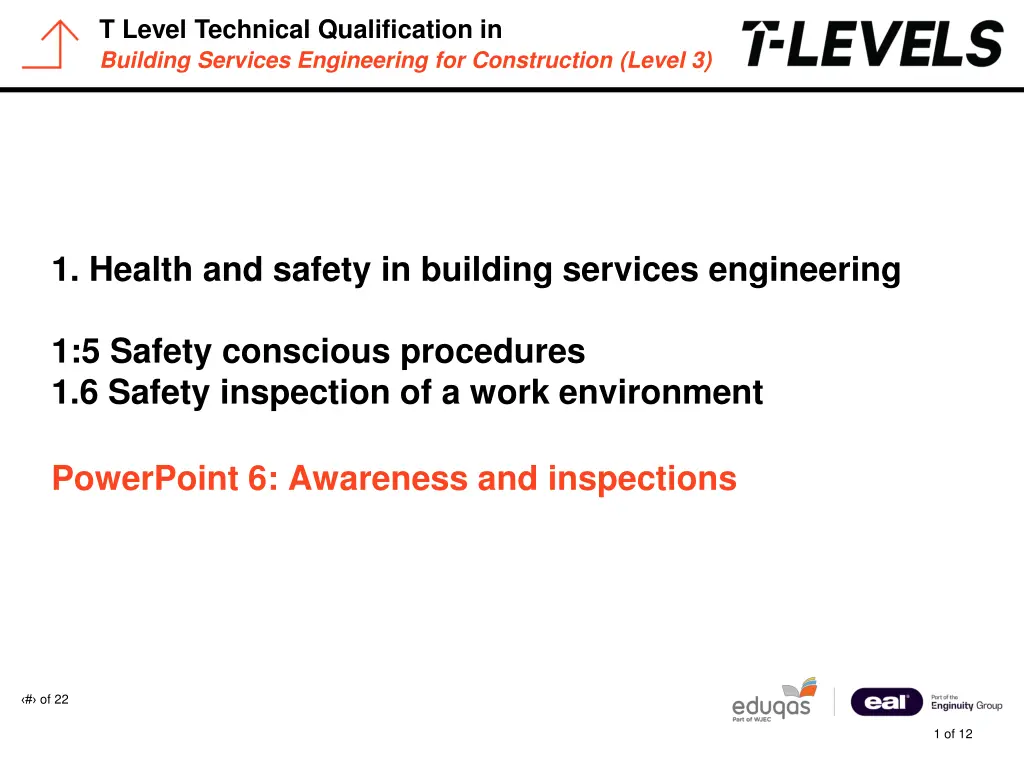
Safety Consciousness in Building Services Engineering
Enhance your understanding of safety-conscious procedures and inspections in building services engineering for construction. Learn to recognize and report potential hazards, communicate effectively, maintain good housekeeping, and meet HSE construction site inspection requirements. Discover methods to lower risks through safety consciousness and various controls, promoting a safer work environment.
Download Presentation

Please find below an Image/Link to download the presentation.
The content on the website is provided AS IS for your information and personal use only. It may not be sold, licensed, or shared on other websites without obtaining consent from the author. If you encounter any issues during the download, it is possible that the publisher has removed the file from their server.
You are allowed to download the files provided on this website for personal or commercial use, subject to the condition that they are used lawfully. All files are the property of their respective owners.
The content on the website is provided AS IS for your information and personal use only. It may not be sold, licensed, or shared on other websites without obtaining consent from the author.
E N D
Presentation Transcript
T Level Technical Qualification in Building Services Engineering for Construction (Level 3) PowerPoint presentation 1:5 Safety conscious procedures 1.6 Safety inspection of a work environment 1. Health and safety in building services engineering PowerPoint 6: Awareness and inspections # of 22 1 of 12
T Level Technical Qualification in Building Services Engineering for Construction (Level 3) Objectives By the end of the session, learners should be able to: understand safety-consciousness describe to report potential hazards outline methods of communication describe the importance of good housekeeping outline the requirements of an HSE construction site inspection. # of 22 2 of 12
T Level Technical Qualification in Building Services Engineering for Construction (Level 3) Being safety conscious Safe systems of work cannot always eliminate all the risks involved in a specific operation. Therefore, priority falls to lowering the risks involved in the process to an acceptable level: in other words, being safety conscious. This can be achieved by different procedures such as introducing engineering controls, administrative controls, etc and also, of course, by your own awareness concerning issues of safety in the workplace. Mechanical examples include introducing a local exhaust ventilation system or guarding the moving parts of machinery. # of 22 3 of 12
T Level Technical Qualification in Building Services Engineering for Construction (Level 3) Being safety conscious There are many ways we can be safety conscious in construction, such as: reporting of potential hazards it is important to report any potential hazards identified to your supervisor or site manager. Good communication is essential. Make any concerns known clearly and quickly. Procedures that must be followed when hazards cannot be eliminated completely. site inductions educating site operatives about the safety processes on a specific site training eg use of equipment, health and safety (eg the Construction Site Certification Scheme CSCS), fire and first aid training as required toolbox talks meetings to discuss a particular topic between trades. # of 22 4 of 12
T Level Technical Qualification in Building Services Engineering for Construction (Level 3) Being safety conscious There are many ways we can be safety conscious in construction, such as: reporting of potential hazards it is important to report any potential hazards identified to your supervisor or site manager. Good communication is essential. Make any concerns known clearly and quickly. site inductions educating site operatives about the safety processes on a specific site training eg use of equipment, health and safety (eg the Construction Site Certification Scheme CSCS), fire and first aid training as required toolbox talks meetings to discuss a particular topic between trades. # of 22 5 of 12
T Level Technical Qualification in Building Services Engineering for Construction (Level 3) Being safety conscious There are many ways we can be safety conscious in construction, such as: reporting of potential hazards it is important to report any potential hazards identified to your supervisor or site manager. Good communication is essential. Make any concerns known clearly and quickly. site inductions educating site operatives about the safety processes on a specific site training eg use of equipment, health and safety (eg the Construction Site Certification Scheme CSCS), fire and first aid training as required toolbox talks meetings to discuss a particular topic between trades. # of 22 6 of 12
T Level Technical Qualification in Building Services Engineering for Construction (Level 3) Being safety conscious There are many ways we can be safety conscious in construction, such as: Reporting of potential hazards it is important to report any potential hazards identified to your supervisor or site manager. Good communication is essential. Make any concerns known clearly and quickly. Procedures must be followed when hazards cannot be eliminated completely. Construction site inductions for all new visitors and workers including identification of risks and hazards and the control measures used to mitigate them. # of 22 7 of 12
T Level Technical Qualification in Building Services Engineering for Construction (Level 3) Being safety conscious There are many ways we can be safety conscious in construction, such as: On and off the job health and safety training and related qualifications. e.g. use of equipment, health and safety (eg the Construction Site Certification Scheme CSCS), fire and first aid training as required Toolbox talks which involve short training sessions at a place of work to discuss health and safety issues and inform personnel about new hazards that may have recently arisen. Good housekeeping including systematic ways of working and keeping areas clean and clear. # of 22 8 of 12
T Level Technical Qualification in Building Services Engineering for Construction (Level 3) Construction site safety inspections Due to the construction industry being one of the most dangerous environments to work in, construction sites are routinely inspected by the Health and Safety Executive (HSE), whose inspectors have the right to enter your site without prior notice. So: be prepared at all times for an audit of site safety. Inspectors work within the guidelines and regulations of the law. They will often make a photographic record of the site and will ensure that all health and safety documentation is up to date. # of 22 9 of 12
T Level Technical Qualification in Building Services Engineering for Construction (Level 3) Types of inspection Sensory inspections: evaluateconstruction operatives' awareness (consciousness) regarding the hearing and smelling of possible dangers in the workplace. Visual inspections: speak for themselves what dangers are visibly clear? Are they being managed correctly? General health and safety risk management: inspectors ensure any contractors to the site have formally agreed to meet the health and safety standards of that site. They will ensure any equipment is installed correctly, is regularly inspected and is properly maintained according to manufacturer s instructions. # of 22 10 of 12
T Level Technical Qualification in Building Services Engineering for Construction (Level 3) Good housekeeping: general order Inspectors will be also be checking how the general cleanliness and waste management of the site is managed. For example: Are all walkways, stairs and work areas clear and easy to access? Are walkways level, even and gritted if slippery in cold or wet weather? Are materials stored safely in their correct places? Is waste managed and recycled as much as possible? # of 22 11 of 12
T Level Technical Qualification in Building Services Engineering for Construction (Level 3) Good housekeeping: working at height Site managers must demonstrate they are following the Work at Height Regulations 2005, for example: workers are taking proper precautions, such as the use of edge protection on scaffolding there is universal awareness of ladder safety (correct type of ladder, ladder in good repair, placed on suitable ground, properly secured and always at the correct angle and length). relevant training has been completed for all site operatives. # of 22 12 of 12
T Level Technical Qualification in Building Services Engineering for Construction (Level 3) Good housekeeping: welfare facilities Inspectors will enquire into the welfare facilities on site. For example: Is a kitchen or canteen provided for site operatives to rest and eat? This area should be well lit, ventilated and be at a suitable temperature for the time of year. Is there a changing area and a place to dry/store items of clothing and workwear? Are washing facilities and clean working toilets available? Clean soap and towels must be provided for site personnel to wash and dry their hands. Washbasins should have hot and cold running water. # of 22 13 of 12
T Level Technical Qualification in Building Services Engineering for Construction (Level 3) Good housekeeping: PPE The inspector will make sure all site operatives are wearing the appropriate personal protective equipment (PPE), correctly and at suitable times.They will: ensure hard hats, ear protectors, masks and gloves are available to the team and are used correctly stress the importance of wearing the correct safety footwear on site ensure PPE is well maintained and in good condition. # of 22 14 of 12
T Level Technical Qualification in Building Services Engineering for Construction (Level 3) Good housekeeping: health and safety records The site must also record and store all health and safety information for audit by an inspector. All internal ( in-house ) and external inspections must be recorded. These should include information on: equipment storage welfare facilities risk assessments method statements near misses workplace accidents and incidents access to equipment. # of 22 15 of 12
T Level Technical Qualification in Building Services Engineering for Construction (Level 3) Safety conscious procedures Potential consequences of not adhering to them. Benefits of having safety conscious procedures in place Injury/death Reduced Accidents and Injuries Loss of business Fines Improved Reputation Increased costs Compliance with Regulations Project timescales slipping Cost Savings # of 22 16 of 12
T Level Technical Qualification in Building Services Engineering for Construction (Level 3) Any questions? # of 22 17 of 12

